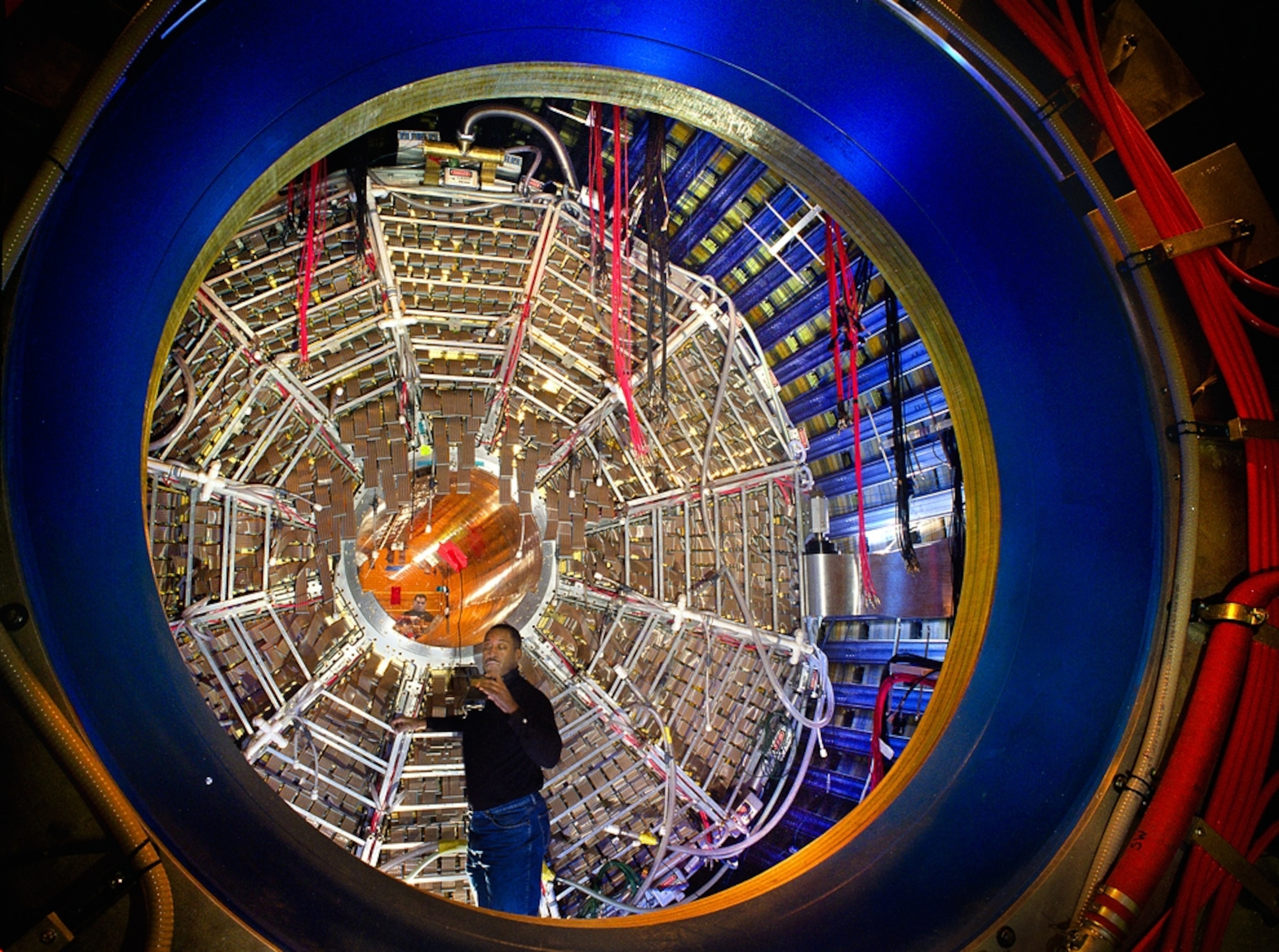
Heaviest Antimatter Found; Made in U.S. Atom Smasher
Finding new particles "like stamp collecting," expert says.
A tiny "big bang" set off in Long Island recently created a new type of antimatter that's literally off the charts, scientists announced last week.
Dubbed the antihypertriton, the newfound antimatter is the heaviest yet detected. What's more, it's the first type of particle that contains what's called an antistrange quark, which puts the antihypertriton in a new plane on the periodic table of elements.
(Related: "Element 118 Created, This Time for Real, Scientists Say.")
Scientists created the new antimatter last spring using the Relativistic Heavy Ion Collider (RHIC) at Brookhaven National Laboratory in New York. The collider sends heavy ions—atoms that have had their electrons removed—careening into each other at near light speed so that the atoms break into their component particles.
After smashing together gold ions more than a hundred thousand times, researchers sifting through the particulate "rubble" found about 70 antihypertritons. The particle is about 200 megaelectron volts heavier than the previous most massive record holder, antihelium.
"People think we are strange because everyone wants to turn things into gold," said RHIC researcher Zhangbu Xu. "We turn gold into exotic antimatter."
Antimatter Made From "Quark Soup"
The cores, or nuclei, of normal atoms are made of subatomic particles called protons and neutrons, which are in turn made of smaller particles called quarks and gluons. By contrast, antimatter nuclei are made of particles that have the same masses as their counterparts but with opposite charges and magnetic properties.
(See "Antimatter Atoms Trapped for First Time—'A Big Deal.'")
In the beginning, the big bang created equal amounts of matter and antimatter. But there was so much material that gravitational forces kept the particles from spreading out. In the tiny space, antimatter and matter collided and annihilated, turning into pure energy.
Physicists are still puzzling as to why anything survived annihilation, and why our universe today has more matter than antimatter. Creating smaller big bangs in the lab is one way scientists are trying to solve the mystery.
When the RHIC's incredibly fast particles smash into each other, they create a "soup of quark and gluons," said Xu, who presented the results Friday at a meeting of the American Association for the Advancement of Science in Washington, D.C.
As the soup cools—in just a tiny fraction of a second—the elementary particles form bigger particles such as hypertritons and antihypertritons, just as scientists believe occurred in the moments immediately following the big bang.
The newfound antihypertriton is doubly exciting for physicists, because it sits below the plane of the 3-D version of the periodic table.
In the flat chart familiar to schoolrooms, scientists arrange the elements according to the number of protons in their atoms, which denotes mass. But particle physicists further map the elements based on the numbers of neutrons and so-called strange quarks, which aren't found in protons or neutrons.
Several types of normal hydrogen, helium, and lithium atoms contain strange quarks, and they are placed above the flat plane of the periodic table. The new antihypertriton is the first antimatter particle to contain an antistrange quark, so it goes below the plane.
Finding New Particles Is Like Stamp Collecting
It's still unclear whether finding the antihypertriton will have practical implications for physics, said Frank Close, a physicist at the University of Oxford and author of the book Antimatter.
"One way of saying it is it's stamp collecting. Some stamps are more exciting than others," he said.
"The fact that this particle has been found confirms our general belief that antimatter should exist just as much as matter exists," Close added.
When it comes to answering questions about why there's so little antimatter in the universe, the find "doesn't point us any nearer to the answer, but it adds another notch to the general enigma."
(Related: "Thunderstorms Shoot Antimatter Beams Into Space.")
Although the new antimatter was presented recently, the antihypertriton was first described in a paper published online March 4, 2010, in the journal Science Express.
Since that time, the RHIC team has smashed together many more atoms, and Xu and colleagues are still in the process of analyzing the new data in the hopes of finding even more exotic particles.
The hundred million collisions that created antihypertritons, for example, also produced more than 2,000 nuclei of antihelium-3, another rare antiparticle.
"RHIC is an antimatter machine," RHIC's Xu said.





